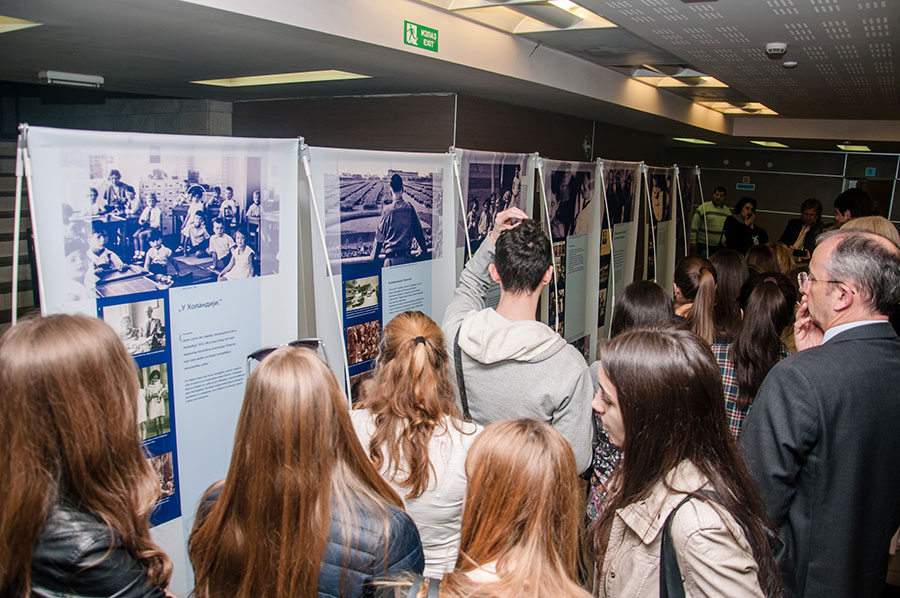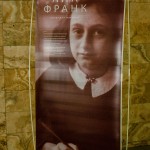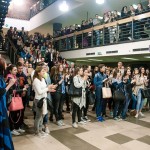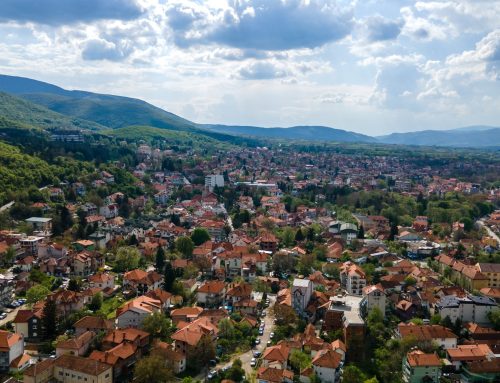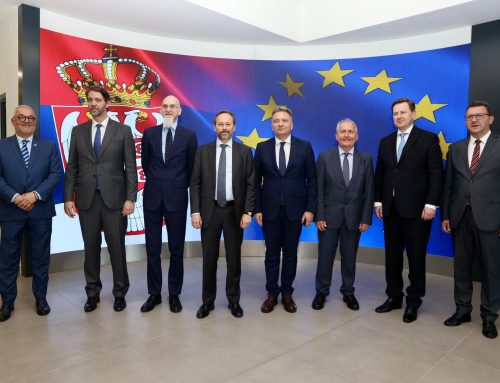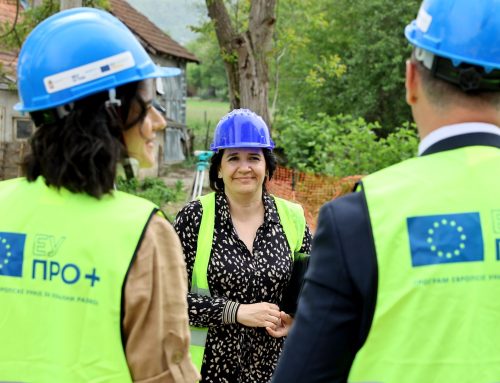Head of the EU Delegation to Serbia Michael Davenport opened the exhibition “Anne Frank – A History for Today” at Belgrade Dom omladine. The travelling exhibition is organised within the regional project “Historija, istorija, povijest – Lessons for Today”. The exhibition is on until 8 May and is organised by educational debate network Otvorena komunikacija in collaboration with Anne Frank House Museum and the EU.
“Peace and reconciliation are the very foundations of the European Union,” said Ambassador Davenport explaining why the European Commission decided to support the project from which the exhibition had originated. “You have chosen Anne Frank as the symbol of reconciliation in the region, slow and painful process but at the same time necessary for the integration of Western Balkans countries in the EU,” said Davenport and reminded that the EU “is the biggest advocate of peace in the Western Balkans and the biggest donor for the projects of project of this kind. Only through joint regional actions such as this one will you be able to understand each others better and reconcile,” said EU Ambassador.

Photo: Otvorena komunikacija
Exhibition includes 32 panels and tells story about the life and destiny of Jewish girl Anne Frank, who died in one of the concentration camps during the WWII. The exhibition includes rare photos of Anne and parts of her diary written during two years spent in a secret hideout in Amsterdam.
The original display is enriched with 7 local panels, created in the framework of “Historija, istorija, povijest – Lessons for Today” project. The panels contextualise historical events in Serbia and the region, marked with conflicts and divisions, in the past 70 years.
The entire display is based on peer education so, in lieu of curators, 15 secondary school students from Belgrade guide the visitors through the exhibition.
The exhibition is modelled upon Anne Frank House’s approach to the study of history. The approach suggests that nationalism, xenophobia and discrimination still occur in societies after the WWII. Goal of the exhibition is to encourage students to reflect critically on historical events and their impact on the challenges of today.
After Belgrade, the exhibition will continue its journey around Serbia. The exhibition will be organised at 15 different locations, including Kragujevac, Nis, Kovacica, Sabac, Novi Sad, Subotica, Sremska Mitrovica, Sombor.

